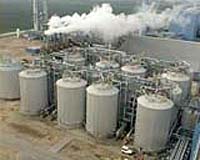 |
Berkeley CA (SPX) Aug 17, 2010 When it comes to selecting the right plant source for future cellulosic biofuel production, the solution won't be one-size-fits-all, and it certainly doesn't have to involve food and feed crops. In a "Perspective" article in the Journal Science, researchers from the Energy Biosciences Institute suggest that a diversity of plant species, adaptable to the climate and soil conditions of specific regions of the world, can be used to develop agroecosystems for fuel production that are compatible with contemporary environmental goals. EBI Director Chris Somerville of the University of California, Berkeley, and Deputy Director Steve Long of the University of Illinois at Urbana-Champaign were co-authors with EBI bioenergy analysts Caroline Taylor, Heather Youngs and Sarah Davis. The institute is a research collaboration between UC Berkeley, the University of Illinois, Lawrence Berkeley National Laboratory, and the funding sponsor BP. The article, "Feedstocks for Lignocellulosic Biofuels," discusses the sustainability of current and future crops that may be used to produce advanced biofuels with emerging technologies that use non-edible parts of plants. Such crops include perennial grasses like Miscanthus grown in the rain-fed areas of the U.S. Midwest, East and South; sugarcane in Brazil and other tropical regions, including the southeastern U.S.; Agave in semiarid regions such as Mexico and the U.S. Southwest; and woody biomass from various sources. "The ability to produce lignocellulosic fuels sustainably is of paramount importance," the authors write. "Because the use of groundwater is generally not sustainable, we envision that the type of energy crop grown in a given region will be primarily related to water-use efficiency." For example, Agave can grow in more arid regions, and since much of the land that has fallen out of agricultural production worldwide is semiarid, "it appears that the amount of land that may be available for cultivation of agave species is vast," the report says. About 18 percent of the earth's terrestrial surface is semiarid. The article points out that biofuel feedstocks need not grow on land currently being farmed for food and animal feed. Some plants, like Miscanthus and switchgrass, have intrinsically high light, water and nitrogen use efficiency. Additionally, reduced tillage and perennial root systems add carbon to the soil and protect against erosion. Thus marginal or abandoned agricultural lands may be developed specifically as biofuel feedstock plantations without competing with food and feed. According to the report, the government of Brazil has plans to intensify its cattle-grazing operations, making land available for agriculture without clearing natural ecosystems. With its highly developed sugarcane-based ethanol industry, Brazil alone could produce liquid fuels equivalent to about 14 percent of the current world transportation fuel demand by 2030. In North America, wood is routinely harvested sustainably for lumber and paper, but activity has declined over the past several decades. As electronic media and paper recycling gain in popularity, the reduced demand for pulp woods could provide opportunities for large amounts of woody biomass to contribute to biofuel production, the authors state. Even corn, the largest global source of grain and feed and a feedstock for ethanol, is given consideration by the authors, but not for its grain. The huge amounts of stems and stripped cobs (stover) of the corn plants have potential as cellulosic fuel sources. However, the report notes, "there is concern that removal of even half the stover would exacerbate loss of soil carbon and erosion and would also require additional inputs of fertilizer to replace lost minerals." Costs for harvesting and transport may also be prohibitive. The diversity and geographic adaptability of crops available as potential biofuel feedstocks can be used to support ecosystem health throughout the world, the EBI researchers conclude. "By focusing on the use of dedicated energy crops - rather than on repurposing food and feed crops - it should be possible to overcome many of the problematic constraints associated with our narrow dependence on a relatively small number of food crops and to develop agroecosystems for fuel production that are compatible with contemporary environmental goals," they write. They also encourage long-term research efforts focused on cellulosic biomass cropping systems in order to identify best management practices that maximize productivity and environmental benefits while meeting sustainability goals.
Share This Article With Planet Earth
Related Links University of California - Berkeley Bio Fuel Technology and Application News
 Linde Starts Up New York Carbon Dioxide Plant
Linde Starts Up New York Carbon Dioxide PlantNew Providence NJ (SPX) Aug 13, 2010 Linde North America has begun production at one of its newest plants, which makes carbon dioxide (CO2) from ethanol in Fulton, New York. Linde North America is a member of The Linde Group, a world-leading gases and engineering company. The new 600 ton-per-day CO2 plant is located at the Sunoco ethanol plant, housed in a former brewery in the Riverview Business Park, some 25 miles north of ... read more |
|
| The content herein, unless otherwise known to be public domain, are Copyright 1995-2010 - SpaceDaily. AFP and UPI Wire Stories are copyright Agence France-Presse and United Press International. ESA Portal Reports are copyright European Space Agency. All NASA sourced material is public domain. Additional copyrights may apply in whole or part to other bona fide parties. Advertising does not imply endorsement,agreement or approval of any opinions, statements or information provided by SpaceDaily on any Web page published or hosted by SpaceDaily. Privacy Statement |